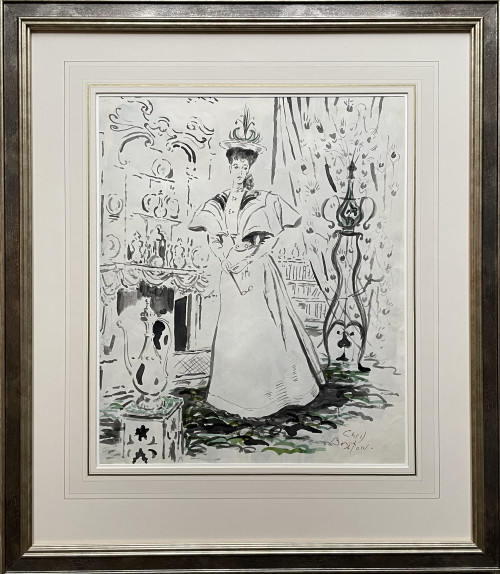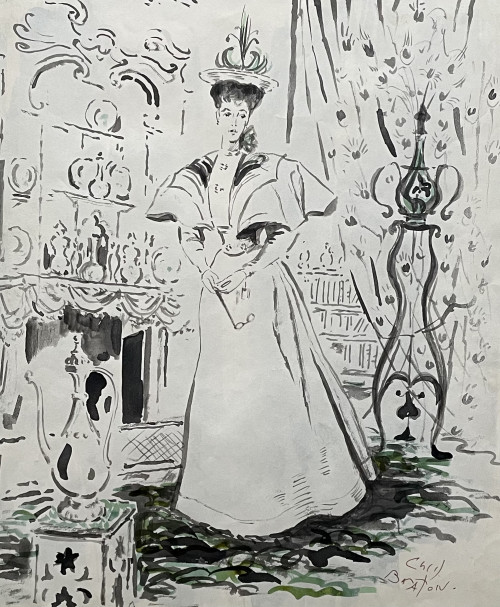- HOME
-
- View All Items
- New Arrivals
- Featured Items
- Artists
-
- View All
- Contemporary
- Birmingham School
- Cotswold Group
- Landscape
- Urban Townscape
- Abstract
- Animals/Birds
- Arts & Crafts
- British Impressionist
- Botanical
- Design/Industrial
- Fantasy/Fairy Subjects
- Female Artists
- Figurative
- Historical
- Illustration/Cartoon
- Marine
- Military/War Artist
- Modern British
- Pre-raphaelite/ Romantic/ Aesthetic
- Nude
- Portrait
- Prints
- Scottish
- Sculpture
- Sporting
- Still Life
- Theatrical
- Interiors/Architectural
-
ARCHIVE
Genre
- View All
- Contemporary
- Birmingham School
- Cotswold Group
- Landscape
- Urban Townscape
- Abstract
- Animals/Birds
- Arts & Crafts
- British Impressionist
- Botanical
- Design/Industrial
- Fantasy/Fairy Subjects
- Female Artists
- Figurative
- Historical
- Illustration/Cartoon
- Marine
- Military/War Artist
- Modern British
- Pre-raphaelite/ Romantic/ Aesthetic
- Nude
- Portrait
- Prints
- Scottish
- Sculpture
- Sporting
- Still Life
- Theatrical
- Interiors/Architectural
- ARTISTS
- Online Exhibitions
- Events
- About
- Contact
- Home
- Medium
- Watercolour & Drawing
- Albert Rutherston - Cymbeline's Tent - illustration
Albert Rutherston - Cymbeline's Tent - illustration
Albert Rutherston - Cymbeline's Tent - illustration
MR7
ALBERT RUTHERSTON, RWS
(1881-1953)
Cymbeline’s Tent – Illustration for The Tragedie of Cymberline
Signed with initials u.r.: AR; also signed with initials and inscribed beneath the mount: Act V Sc V vide play No.2/Drawing X/not to be reduced AR
Pen and ink
Unframed
7 by 11.5 cm., 2 ¾ by 4 ½ in.
(mount size 39.5 by 33 cm., 15 ½ by 13 in.)
Provenance:
Estate of the artist
Exhibited:
London, Sally Hunter Fine Art, Albert Rutherston, Drawings, Theatre Designs and other Treasures, 2016, no.64
The present work was illustrated in Cymbeline, published by Ernest Benn in 1923. The series was a collaboration between Rutherston and Harley Granville-Barker following on from their work together 11 years earlier at the Savoy Theatre and celebrating the quatercentenary of the Shakespeare Folio edition.
Born Albert Daniel Rothenstein, he was the youngest of the six children of Moritz and Bertha Rothenstein, German-Jewish immigrants who had settled in Bradford, Yorkshire in the 1860s. He and his siblings proved to be a hugely talented and artistic family, his elder brother became Sir William Rotherstein (1872-1945), the artist and director of the Royal College of Art; two of his other siblings, Charles Rutherston and Emily Hesslein, both accumulated major modern British and French art collections and his nephew Sir John Rothenstein was direct of the Tate Gallery.
He was educated at Bradford Grammar School before moving to London in 1898 to study at the Slade School of Art where he became close friends with Augustus John and William Orpen. He met Walter Sickert during a painting holiday in France in 1900 and by introducing Sickert to Spencer Gove became instrumental in the beginning of the Camden Town Group. He was one of Sickert’s most frequent companions and was one of the original members of the Fitzroy Street Group. Rutherston had a sociable and attractive personality, he frequently travelled abroad with other artists including Max Beerbohm, Spencer Gore, Walter Russell and Edna Clarke Hall. It was Clarke Hall who introduced him to watercolour painting and in 1910, while in Grasse on the France Riviera.
At the outbreak of World War I he was initially assigned a desk job with the Engineers’ War Service Register at the Board of Trade and from October 1916 he served with the Northamptonshire Regiment in Egypt and Palestine. At this time he anglicised his surname as a declaration of patriotism to the country of his birth. Following the war he returned to his artistic career and married the actress, Marjory Holman. He took a number of teaching posts, starting at Camberwell School of Art and later becoming Ruskin Master of Drawing in 1929. At the same time his own work flourished when he was recruited as an illustrator by the Curwen Press along with Claud Lovat Fraser and Paul Nash. In 1938 he largely returned to oil painting.
Rutherston became a member of the New English Art Club in 1905, a member of the Royal Society of Painters in Watercolours in 1942 and was also a regular exhibitor at the Cheltenham Group. Examples of his work are in the collections of the Tate Gallery, Victoria & Albert Museum Ashmolean Museum, Bradford Art Gallery Manchester City Art Gallery and elsewhere.
Thank you for your enquiry.
We will get back to you soon.
Please create wishlist to add this item to
RELATED ITEMS

















